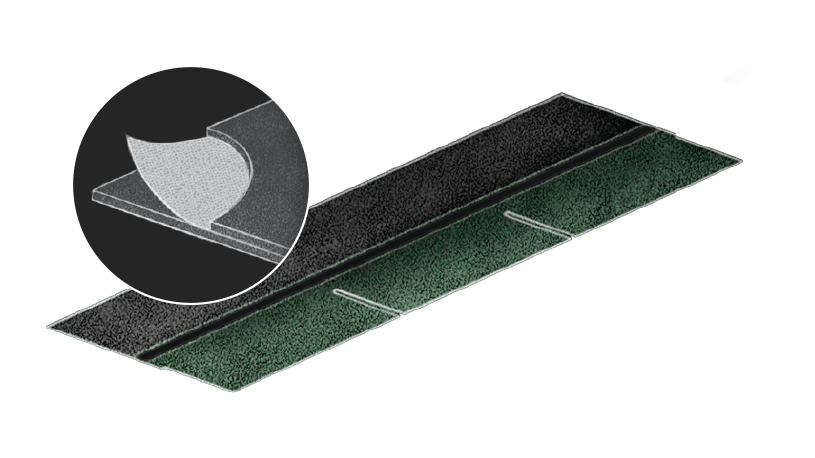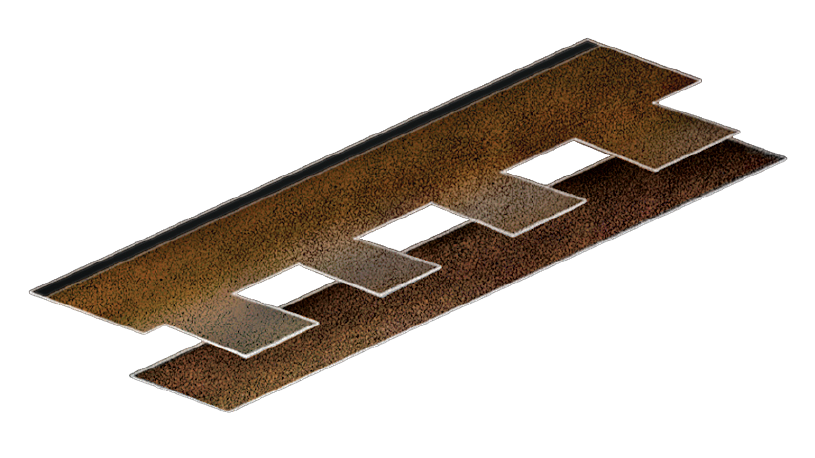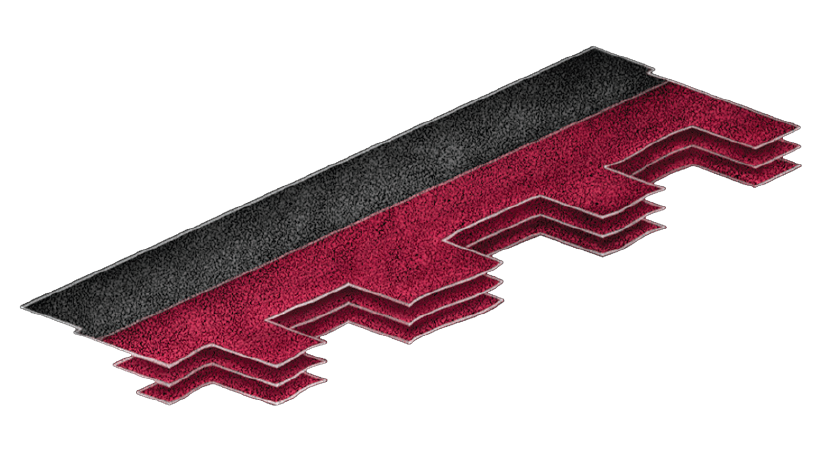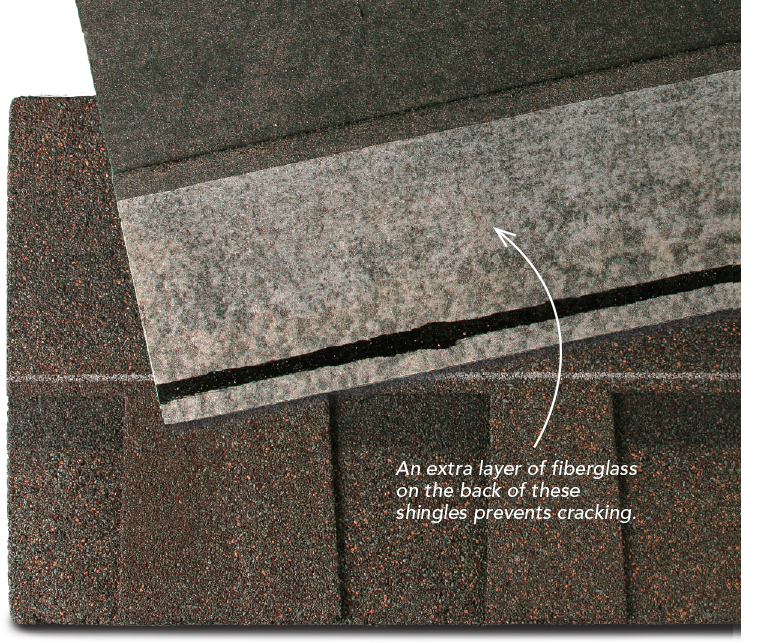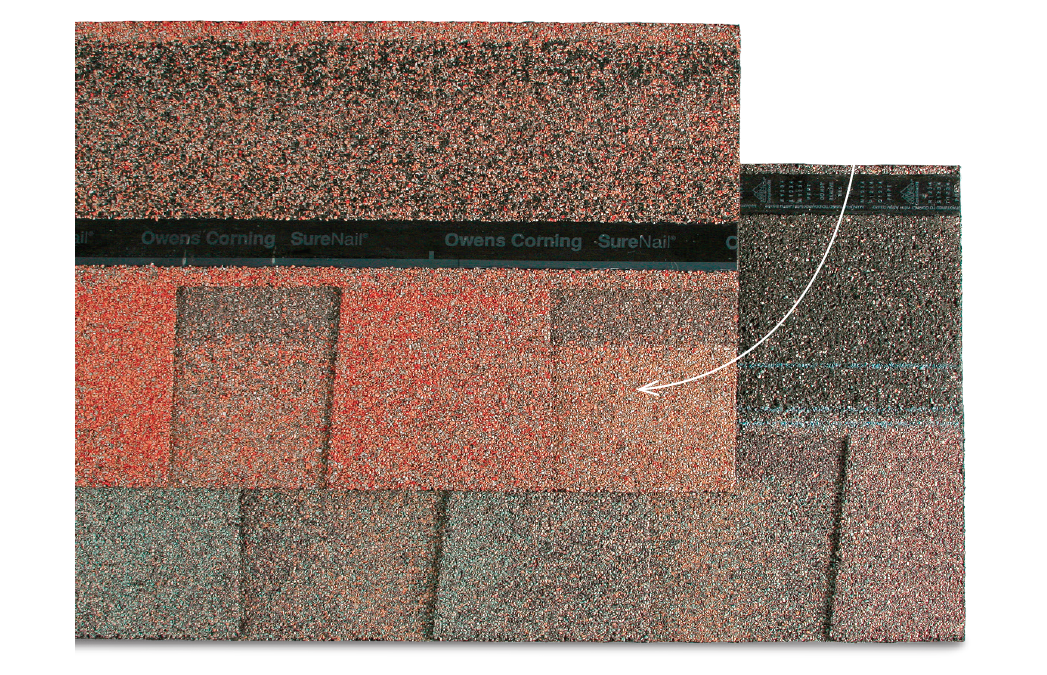Will Your Next Asphalt Roof Last a Lifetime?
Asphalt shingles have come a long way since the advent of the simple three-tab. Now, durable laminated shingles dominate the market.
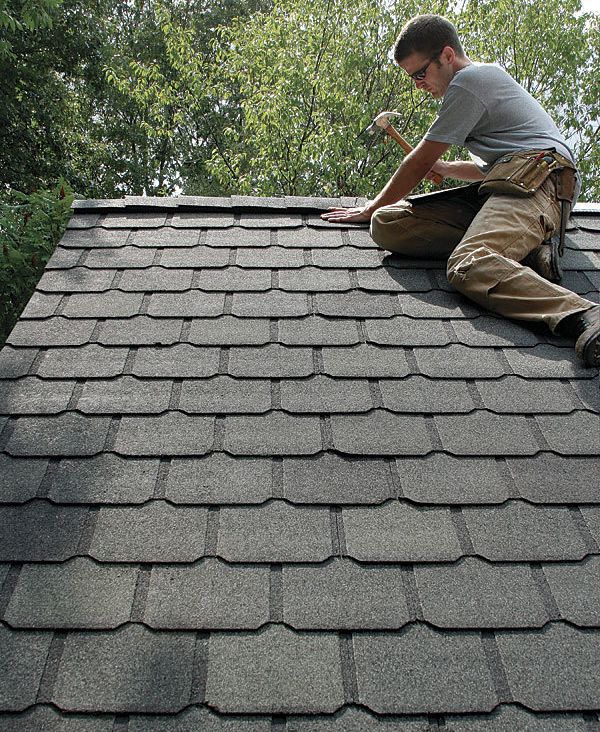
Synopsis: Historically, asphalt shingles have been appealing for their low cost, to the detriment of their aesthetic appeal. Today, writes senior editor Justin Fink, asphalt-shingle manufacturers are focused on making their products stronger, sturdier, and more attractive—and with a longer life span, to boot. Shingles now are made by bonding multiple layers of asphalt and fiberglass, which creates a thicker, better-performing product. Also, the materials used in today’s shingles are stronger, made to do a better job of withstanding nail pops and high winds. The longest-lasting shingles on the market are laminated shingles with a lifetime warranty and fall into two categories: dimensional shingles, which have a standard architectural shingle pattern) and “luxury” shingles, which do a better job of approximating the appearance of shakes or slate shingles. This article includes a sidebar on deciphering shingle warranties.
Historically, the appeal of asphalt shingles has been their low cost, both for material and installation. Early three tab shingles, however cheap and durable, were thin and featureless. They were essentially a two-dimensional imitation of roofing slate or wood shakes. Manufacturers soon upped the ante by introducing thicker laminated, or architectural, shingles in an effort to enhance shadow lines and mimic the variability of natural materials. An improvement, perhaps, but they still don’t fool anybody into thinking the shingles are anything other than asphalt.
Today the focus is on even thicker, more aesthetically convincing laminated shingles that offer much better performance and durability and that already account for 70% of asphalt-roofing sales. Now it’s easy to find asphalt shingles with expected life spans of 40 to 50 years, or even longer.
Layered for better performance
By bonding multiple layers of asphalt and fiberglass, manufacturers have created dimensional shingles that are thicker than three-tab shingles and offer better performance, thanks to the multiple layers of asphalt and lack of perforated tabs. Initially, the enhanced performance on these shingles was directly related to their thickness: thicker shingle, better shingle. This is still true, but there’s more. The materials themselves have gotten even better.
Improved backer mats do a better job resisting high winds and nail pops. More important, compared to older fabrics, today’s stronger mats carry more asphalt. More asphalt and better asphalt formulations have increased shingles’ waterproofing ability and enhanced their stability, so they don’t dry out and crack or become too soft and easily damaged. Manufacturers won’t reveal any details about their asphalt formulations, but in interviews, they all acknowledge that improved asphalt mixtures have allowed them to increase the length of their warranties.
Finally, tuning the composition of the asphalt sealing strips has also improved wind resistance. The best shingles on the market are usually warranted to resist 110-mph winds with standard nailing patterns, but often, they can pass laboratory testing up to 150 mph. Look for performance standards on bundles and product literature. Shingles designed to meet the highest ASTM wind resistance standards are labeled D3161 Class F, D6381 Class H, or D7158 Class H. But your best bet is the UL 2390 Class H certification, showing independent testing of shingles from random batches.
Shingles have evolved to last a lifetimeManufacturers still offer three-tab shingles, but today the focus is on laminated products. Two-layer dimensional shingles, commonly known as architectural shingles, were the first step toward a more convincing roof and represent 70% of the asphalt market. More recently, manufacturers began creating lifetime-warranted luxury shingles, like the five brands shown here, with thicker two-, sometimes three-layer laminations, in the traditional architectural-shingle style, as well as more creative designs. Three-tab shingles Their low cost has made them a favorite for years, and they are still available today. But these thin and featureless shingles have little aesthetic appeal, and they need to be replaced every 20 years or so. Dimensional shingles Laminating two fiberglass-and-asphalt layers makes a more durable shingle that can last more than 50 years. The extra thickness and more random pattern offer some shadows and texture as well. Luxury shingles Loaded with waterproofing asphalt and composed of two or three thicker fiberglass-asphalt-granule layers, these shingles are intended to last a lifetime and to replicate traditional slates or shakes. CertainTeed Grand ManorStyle: Luxury, slate look Wind-resistance warranty: 110 mph Algae-resistance warranty: 15 years Color options: 10 Cost: $300/sq. With an 8-in. exposure, this slate-style shingle looks best on steep roofs (9-pitch and greater). The shingle is made with two full-size laminates. The bottom layer is solid with no cutouts, the top layer has cutout tabs to replicate slates, and additional tabs are randomly applied to the top layer to increase the thickness and add the variety you’d see in a slate roof. Grand Manor can be installed in coursing patterns or designs with CertainTeed’s Carriage House shingle (a scalloped slate style) for a vintage slate look. CertainTeed Presidential TLStyle: Luxury, shake look Wind-resistance warranty: 110 mph Algae-resistance warranty: 15 years Color options: 10 Cost: $160/sq. The crenellated design of these shingles looks skimpy, but with this triple-layer laminate, you actually end up with six layers of coverage—the most of the shingles profiled here. At 5⁄8 in. thick, with a 4-in. exposure and staggered lines, it’s a good representation of a shake when viewed from the curb. If you like the idea of triple-laminate construction but balk at the cost and weight of the Presidential TL, check out CertainTeed’s Landmark TL. It costs about half as much, weighs a third less, and has the traditional dimensional shingle pattern. GAF-Elk Timberline Prestique LifetimeStyle: Dimensional Wind-resistance warranty: 110 mph Algae-resistance warranty: 10 years Color options: 18 Cost: $150/sq. About 30% thicker than the popular 30-year version of this shingle, the lifetime model is available in eight colors nationwide, with additional colors available by region. The blend of granule colors creates a high-definition shingle with the appearance of transitioning shadowlines to enhance depth. Owens Corning Berkshire collectionStyle: Luxury, slate look Wind-resistance warranty: 110 mph Algae-resistance warranty: 15 years Color options: 7 Cost: $235/sq. This double-layer shingle has a granule color blend designed to add depth to each “slate” and create the appearance of shadowlines. As with many luxury shingles, special installation requirements apply. These shingles, for instance, must be installed in vertical columns rather than diagonally up the roof. TAMKO Heritage VintageStyle: Luxury, shake look Wind-resistance warranty: 110 mph Algae-resistance warranty: 10 years Color options: 7 Cost: $120/sq. Similar in appearance to CertainTeed’s Presidential TL, TAMKO’s shake-look shingle is constructed of two layers, which provides four layers of coverage instead of the six found on the Presidential TL. That said, the Heritage Vintage costs about 25% less than its competitor and shares the same UL-certified wind resistance. In fact, it had the best resistance against blow-offs in a recent Consumer Reports test. *Costs are local to Connecticut and are for shingles only. |
Thicker shingles look better and last longer
The longest-lasting products on the market are laminated shingles with lifetime warranties. These fall into two categories: dimensional shingles (the standard architectural shingle pattern) and what manufacturers call “luxury shingles.” Intended to do a better job of approximating the appearance of shakes or slate shingles, luxury shingles are much thicker and can have larger exposures than dimensional shingles.
Mimicking a piece of slate or achieving the shadowlines of wooden shingles requires a thick shingle. For example, Certain-Teed’s Presidential TL shingles are about 5⁄8 in. thick, and each one is made of three distinct layers of fiberglass coated in asphalt and granules. Their heft is one of the first things you’ll notice—a square (100 sq. ft.) weighs 480 lb.—and is something to keep in mind if you’re the one humping bundles up to the roof. (By comparison, a 30-year architectural shingle weighs about 250 lb. per square and three-tab shingles around 200 lb.)
Lifetime shingles typically use a mix of light and dark granules to enhance the shingle’s depth further. Blending multiple granule shades allows the color to change slightly as your perspective changes, just as it would with a natural material. Color management on these shingles is good enough that you can use shingles from different production runs, and low-slope roll-roof products coordinate with shingles.
Companies offer algae protection for most of their shingle lines, and in most parts of the country, it’s worth the small additional cost. By coating the granules in a thin layer of copper, they provide protection against blue-green algae. This airborne microorganism leaves dark streaks on roofs and is widespread across much of the country. If you’ve ever seen a clean swath of roof beneath a copper-flashed chimney, you have a sense of copper’s effectiveness in this regard; however, the treatment is not ideal in low-rain areas or in areas with “salt fog,” such as parts of Southern California, as the copper runoff can corrode aluminum gutters and flashing.
2 options for extreme weatherImpact-resistant shingles Houses in areas prone to hurricanes and/or strong wind gusts need a shingle with high wind resistance. And along with high winds comes a certain amount of debris in the air. Impact-resistant shingles contain a tough fiberglass base to prevent cracking when they take a hit. Tougher than the fiberglass used for the layers, this scrim is visible on the shingle bottom. Shingles with the highest impact resistance carry a UL 2218 Class 4 label and can withstand a 2-in. steel ball traveling 90 mph.
Cool shingles for hot climatesIf you use an air conditioner during most of the summer, you should consider two products that are designed to keep the roof cooler. By spraying the granules with a white ceramic coating before adding the finish color, the manufacturers of these shingles are able to improve solar reflectance.
|
6 things to know about your warrantySince lifetime shingles run $120 to $300 a square compared to $80 to $100 for 30-year laminates, you should know what you get for the money. Aesthetic considerations aside, you get a warranty that covers labor as well as material costs for twice as long as the cheaper shingles, often a better prorated deal outside the first decade of use, and coverage for higher winds. Full warranty information can be found on each manufacturer’s Web site, but here are the basics. 1. Coverage is prorated after 10 years. The coverage period on a lifetime shingle is broken into two periods. If a defect is found within the first 10 years, material and labor costs (for installation only) are covered. Starting with year 11, only prorated material costs are covered, and labor is up to you. Damage related to transportation, storage, installation, or acts of God is not covered. 2. Is an extended warranty worth the cost? Companies focus heavily on production consistency, so manufacturing defects are pretty rare. While warranties are filled with plenty of qualifications, the fact that some brands offer extended 50-year full-material and labor coverage through certified contractors indicates that with careful installation, a lifetime shingle should be just that—with no need to pay for the extended warranty. 3. Algae means a cleaning crew, not a new roof. If blue-green algae appear on algae-resistant shingles during the typical 10- to 15-year warranty period against this growth, the manufacturer will cover the cost of cleaning your roof. (Owens Corning prorates the coverage after the first year.) Don’t expect a new roof or an easy battle, though. The use of qualifying phrases like “adversely affected” and “pronounced discoloration” suggest a potential claims hassle. 4. Wind warranty requires a proper seal. The best shingles are designed and warranted to withstand winds up to 110 mph during the first 10 years. But warranties stipulate that the shingles must be exposed to direct sunlight to seal properly. If the shingles are installed in cold weather or if the roof doesn’t receive adequate direct sunlight to seal the strips, the wind coverage doesn’t apply. Coverage extends to 130 mph on some brands but requires a high-wind nailing pattern and the manufacturer’s brand of underlayment. 5. Watch out for hot roofs. If you don’t know how your roof was built, you need to find out before choosing a shingle. For instance, if you have an unvented, insulated roof, your shingle warranty may be void from day one. 6. Home buyers, beware of transfers. Most manufacturers will transfer a lifetime warranty from the original homeowner to the first subsequent buyer, though coverage will be reduced to 50 years. Some manufacturers will only transfer if the house is sold within the first 10 years of the warranty period; for TAMKO, it must be within two years. Most manufacturers require written notice of the change in ownership within 30 to 60 days of the sale, and Owens Corning requires a $100 transfer fee. |
Contributing editor Sean Groom lives in Simsbury, Conn. Photos by Rodney Diaz.
From Fine Homebuilding #214
Fine Homebuilding Recommended Products
Fine Homebuilding receives a commission for items purchased through links on this site, including Amazon Associates and other affiliate advertising programs.

Peel & Stick Underlayment

Roof Jacks

Ladder Stand Off

